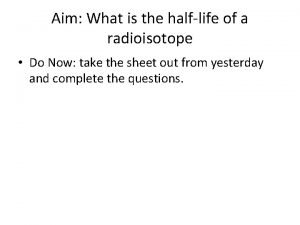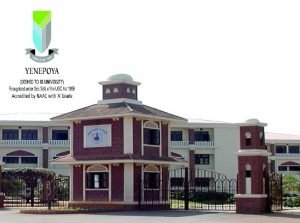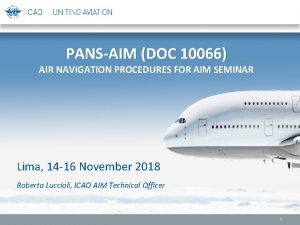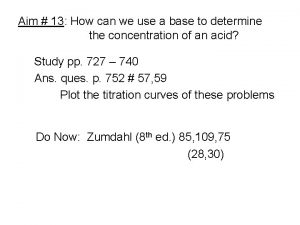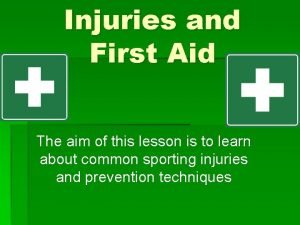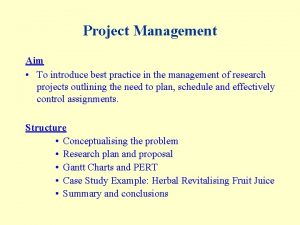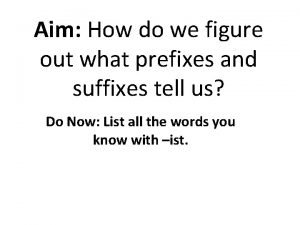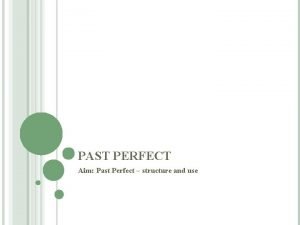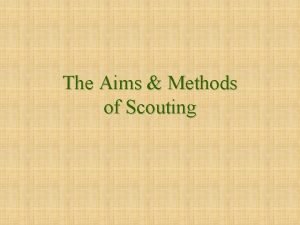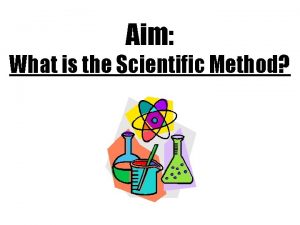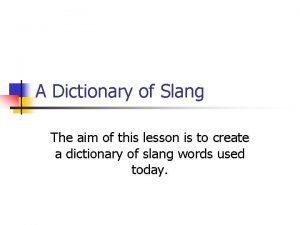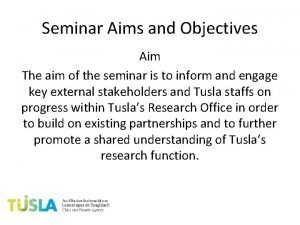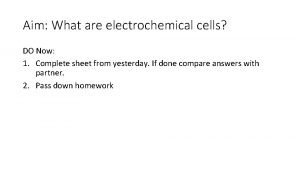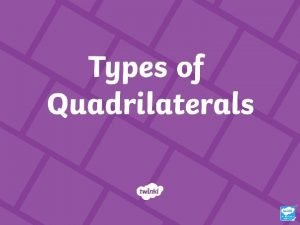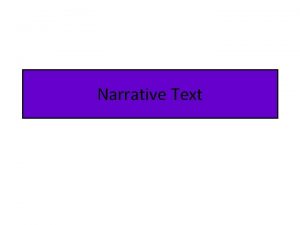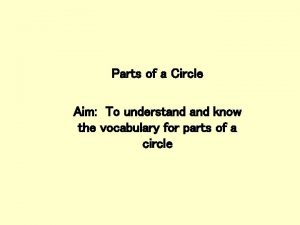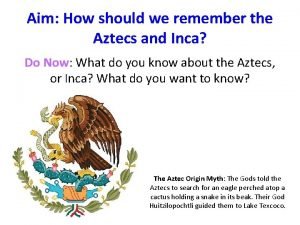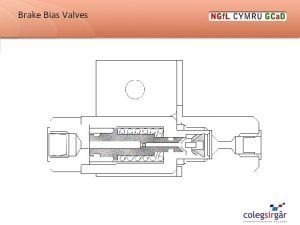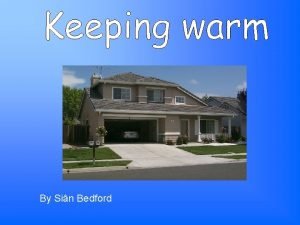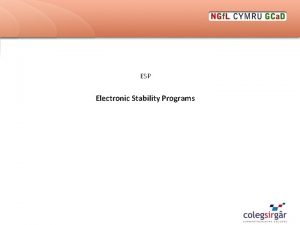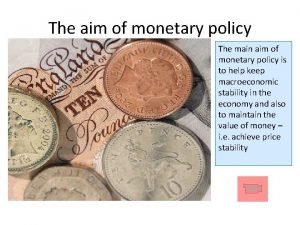AIM DO NOW HW AIM DO NOW HW






































































- Slides: 70

AIM: DO NOW: HW:

AIM: DO NOW: HW:

AIM: WHAT IS WEDGL? ? ? DO NOW: 1. TAKE A VOCAB 2. IF YOU NEED TO MAKE UP THE TEST BE READY NOW! IF YOU HAVE BOTH PARTS TO MAKE UP I WILL SEE YOU AT LUNCH TODAY =( HW: 1. VOCAB part 1 DUE FRIDAY 2. CHECK HW CALENDAR

WHAT IS THE KEY ACTION WORD IN THE QUESTION? ?

Rock Cycle R. T. pg. 6




AIM: WHAT IS AN AQUIFER AND WHY SHOULD I CARE? (GROUNDWATER) DO NOW: ANSWER WHERE DO WE GET OUR DRINKING WATER FROM? ? ? HW: 1. READ PAGES 1 -3 IN LAB # 27 (GROUNDWATER ACTIVITY) QUICK FILL IN QUIZ TOMORROW!!!!!


What is the purpose of a shed in your backyard?

The World’s Water Supply • 97% of Earth’s water is SALT water • 3% is FRESH water

2% is confined to ice and glaciers That only leaves 1% of all the water on Earth available for humans to use!


LOOK AT THE PICTURE ON THE SIDE BOARD……. .


How is Water Recycled? • The water cycle - water circulates between the hydrosphere (water) and atmosphere (air)


Water evaporates fastest when there are… 1. WARM TEMPERATURES 2. FAST WINDS

3. HIGH SURFACE AREA 4. DRY AIR (low humidity)

AIM: GROUNDWATER ACTIVITY DO NOW: ALL PERIODS CLEAR DESK EXCEPT FOR A PEN/PENCIL HW: LAB #27 DUE MONDAY

AIM: GROUNDWATER ACTIVITY (PERIOD 2 AND 7) DO NOW: 1. TAKE OUT LAB # 26 2. SIT QUIETLY AND WAIT FOR INSTRUCTION =) HW: 1. LAB #27 DUE MONDAY 2. VOCAB PART 1 DUE TOMORROW 3. GROUNDWATER REVIEW QUESTIONS DUE MONDAY



AIM: What is permeability? DO NOW: 1. Which container will allow water to flow through faster? Which container has a greater total porosity? Which will retain more water? HW: 1. LAB #27 DUE MONDAY 2. VOCAB PART 1 DUE TOMORROW 3. GROUNDWATER REVIEW QUESTIONS DUE MONDAY


1. Infer why water will get stuck traveling through column D. 2. Determine what will happen to the rate of the water as it travels through the other columns.

What conditions allow for infiltration of water into ground? • Unsaturated – empty (not already filled with water) • Gentle Slope – so water is able to seep in

• Permeable – ground must have open pore spaces (porosity) to allow water to pass through (pavement or black top are not permeable. )

• Water will infiltrate when the ground is flat and permeable

AIM: REVIEW OF GROUNDWATER DO NOW: 1. TAKE OUT VOCAB HW: 1. LAB # 27 DUE MONDAY 2. GROUNDWATER REVIEW QUESTIONS DUE MONDAY






What is permeability? • The rate at which groundwater will infiltrate the rock and sediments • Bigger pore spaces = faster permeability

WHAT HAPPENS IF THE WATER CANT PERMEAT INTO THE GROUND FAST ENOUGH?

Runoff

What conditions cause Runoff? 1. Ground is frozen (not permeable)

2. Soil is already fully saturated with water 3. Rainfall exceeds the rate of infiltration

4. The slope of the land is steep 5. Vegetation of area has been stripped away

Why does the water travel upward through the paper towel?

Capillary Action • The upward movement of water against gravity

• Occurs because water is sticky –(positive Hydrogen's and negative Oxygen attract) • The smaller the pores, the higher the water rises

WHERE IS THE ZONE OF SATURATION IN THIS DIAGRAM? WHAT COULD CAUSE THE ZONE OF SATURATION TO INCREASE IN HEIGHT?

What is the water table? • The level of stored water within rock and sediments underneath us. • Where the zone of saturation meets the zone of aeration.


The Water Table • Groundwater flows from areas where the water-table is high, to areas where it’s low.

Why do lakes and streams dry up?

• A lack of PRECIPITATION will DECREASE the water table • An increase in PRECIPITATION will INCREASE the water table

What determines the changing level of our water table?

Porosity – the percentage of pore space • Water is found in the pores between particles of rock.

• The more pores there are, the more water can be held

High Porosity Low Porosity

What affects porosity?

1. Shape of Particle A ANGULAR FITS CLOSER ROUND DOESN’T FIT CLOSE Low Porosity High Porosity B

2. Packing • CLOSER = LESS SPACE • FARTHER = MORE SPACE Higher Porosity

3. Sorting A Well Sorted Unsorted High Porosity Low Porosity B

• The total porosity will be equal if they have the same shape and sorting…. . regardless of size










 Aim do now
Aim do now Aim and do now
Aim and do now Now i see it now you don't
Now i see it now you don't Unit 14 physiological disorders assignment 2
Unit 14 physiological disorders assignment 2 Half life aim
Half life aim Aim spot welder
Aim spot welder How to identify a triangle
How to identify a triangle Spartan aim
Spartan aim Aim graph
Aim graph Emeril
Emeril Aim
Aim When is an ifr flight plan required?
When is an ifr flight plan required? Peter steiner videos
Peter steiner videos Chapter 7 systems of equations and inequalities
Chapter 7 systems of equations and inequalities Objective of rch programme
Objective of rch programme Aim injection molding
Aim injection molding Doc 10066 icao
Doc 10066 icao Aim-c
Aim-c Aim 13
Aim 13 First aid aim
First aid aim Humanistic therapy aims to
Humanistic therapy aims to Matt rosenberg md
Matt rosenberg md Purpose of descriptive
Purpose of descriptive Aim past tense
Aim past tense Aim in biology
Aim in biology Convert aim
Convert aim Aim ratio
Aim ratio Aim project management
Aim project management Aim area
Aim area Suffix for act
Suffix for act Past perfect simple structure
Past perfect simple structure Learning target
Learning target Health and social care unit 5
Health and social care unit 5 The aims of scouting
The aims of scouting What are the different types of media
What are the different types of media Baghouse filter definition apes
Baghouse filter definition apes Augustan age characteristics
Augustan age characteristics Re-aim
Re-aim The aim in chemistry
The aim in chemistry Ann's bad aim
Ann's bad aim Aim plural
Aim plural Aim lans
Aim lans Objective of marketing mix
Objective of marketing mix Aim scientific method
Aim scientific method Aim agentur
Aim agentur Aim spark software
Aim spark software Aim slang
Aim slang Objectives for seminar
Objectives for seminar Aim time management
Aim time management Voltaic aim
Voltaic aim That is not all technique
That is not all technique Types of aim
Types of aim Apa itu previewing and predicting
Apa itu previewing and predicting Language english
Language english Triple aim
Triple aim Aviation system block upgrades
Aviation system block upgrades Aim slds
Aim slds Aim who
Aim who Reamed slang
Reamed slang Elizabeth wiredu
Elizabeth wiredu Datwg
Datwg The purpose of the narrative text is …
The purpose of the narrative text is … Aimcest
Aimcest Aim for success
Aim for success Aim mutual funds
Aim mutual funds Health education define
Health education define The circle aim
The circle aim Laney et al
Laney et al Aim who
Aim who Maya and aztec similarities
Maya and aztec similarities Aim 4170
Aim 4170




